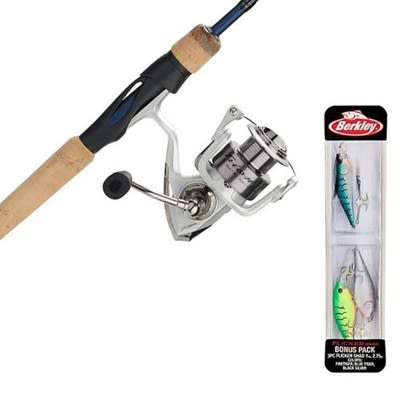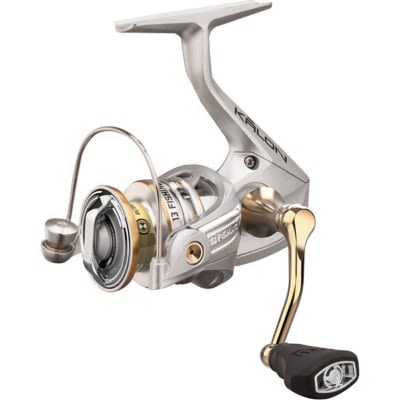Today's Best Fishing Times
Get the best fishing times for Lac la Croix Lake with Lake-Link's Fishing Forecast. SEE MORE
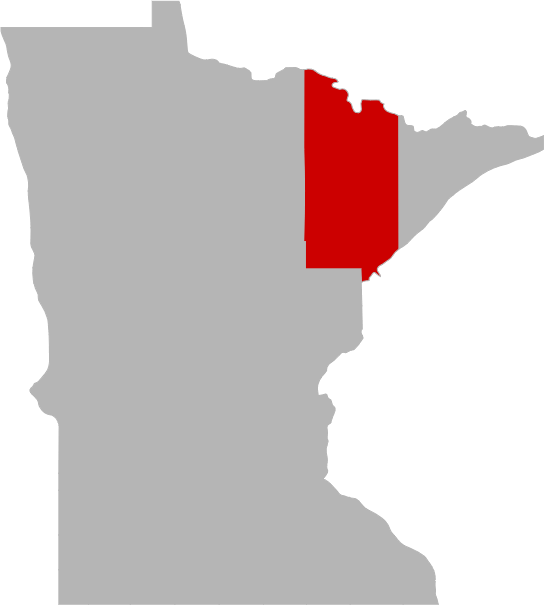
Due to its location in the BWCAW, Lac La Croix is a popular destination for canoeing and wilderness camping. The lake is accessible only by non-motorized watercraft, such as canoes, kayaks, and sailboats, which allows visitors to experience the lake and surrounding wilderness in a peaceful and natural setting.
Lac La Croix is also known for its excellent fishing opportunities, particularly for walleye, northern pike, smallmouth bass, and lake trout. The lake is managed as a catch-and-release fishery, which helps to maintain healthy populations of fish and preserve the natural beauty of the lake.
The surrounding wilderness offers opportunities for hiking, camping, and wildlife viewing. The area is home to a variety of wildlife, including moose, black bears, wolves, and bald eagles.
Visitors to Lac La Croix are required to obtain a permit from the US Forest Service , which helps to manage the use of the wilderness and ensure that visitors have a safe and enjoyable experience.
Overall, Lac La Croix is a beautiful and remote wilderness lake that offers visitors the opportunity to experience the natural beauty and solitude of the Boundary Waters Canoe Area Wilderness.
Share your catch!
We want to see what you've caught on Lac la Croix Lake.Frequently Asked Questions About Lac la Croix Lake, MN
- How big is Lac la Croix Lake?
- How deep is Lac la Croix Lake?
- What kind of fish can you catch in Lac la Croix Lake?
- Are there places to stay in the Lac la Croix Lake area?
- Are there places to eat and drink near Lac la Croix Lake?
- What is the average air temp for Lac la Croix Lake?
How big is Lac la Croix Lake?
How deep is Lac la Croix Lake?
What kind of fish can you catch in Lac la Croix Lake?
Other fish species in the lake include Cisco (Tullibee), Lake Whitefish, Rainbow Smelt, Shorthead Redhorse, Slimy Sculpin, Trout-Perch and White Sucker.
Are there places to stay in the Lac la Croix Lake area?
More Lodging Options
Are there places to eat and drink near Lac la Croix Lake?
Explore the Lac la Croix Lake area in a RV
Are you looking for an adventurous vacation option that won't break the bank? Look no further than renting an RV! Contrary to popular belief, the process is much simpler than you might imagine. With just a few easy steps, you'll soon be experiencing the ultimate freedom and convenience of exploring the open road in your very own recreational vehicle. And the best part? RV travel can save you up to 60% compared to other types of vacations! With the money you'll save, you'll be able to travel even more and create unforgettable memories along the way. So why wait? Start planning your next adventure today with an RV rental. Learn more about renting a RV.
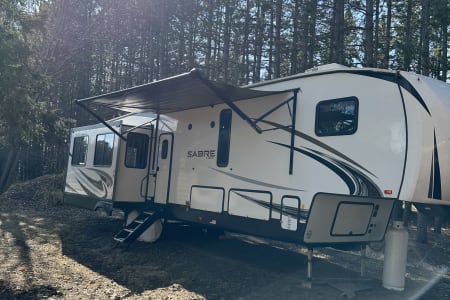
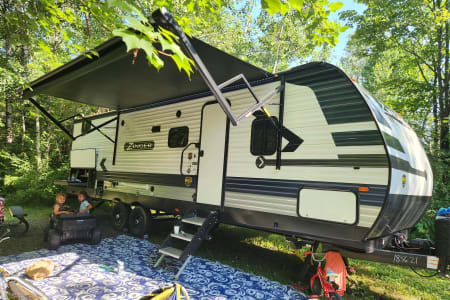

LUXURY Camper Van - 2022 Ford Transit. All amenities & mileage included.
Eveleth, MN
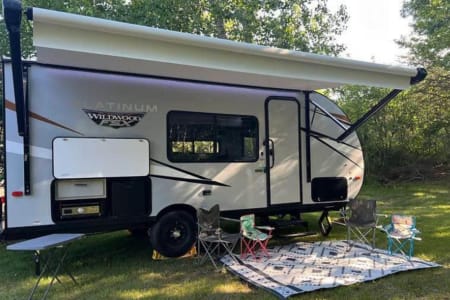
What aquatic invasive species are found in Lac la Croix Lake?
Join us in the fight to prevent the spread of invasive species These sneaky creatures can hitch a ride on boats, clinging onto propellers, anchor lines, and trailers. They can even survive in hidden places like bilge water and ballast tanks, or disguise themselves in dirt and sand that sticks to nets, buckets, anchors, and waders. But don't worry, we have the power to stop them in their tracks with just a few simple steps. So let's do our part and protect our waters from these unwanted invaders.
History & Status of the Fishery
Lac la Croix is a large, sprawling body of water located northwest of Ely and lies along the Canadian border. The whole lake is 34,070 acres with 19,820 acres in Minnesota and 14,250 in Ontario. All of the water in Minnesota is within the Boundary Waters Canoe Area Wilderness and nearly all of it is non-motorized. The only Minnesota water motor boats can legally be used on is the portion between Beatty Portage and south of Snow Bay. The entire Ontario portion is open to year round motor use. There are numerous portage accesses throughout the lake but the most commonly used motor access comes in on the west side and is via two mechanical rail portages from Crane Lake through the Loon River and Loon Lake. These rail portages are capable of carrying very large water craft which are often used by resorts and visitors on the Canadian side. The lakes two major inlets, the Basswood River along the border and Maligne River in Ontario, drain massive areas of land and lakes to the east. The two major outlets are the Namakan River to the north (entirely within Ontario) and the Loon River to the west. Both of these rivers (after several series of lakes on each) reconvene several miles downstream in Namakan Lake. Lac la Croix has a maximum depth of 168 feet and the water color at the time of the survey was clear on the west end and brown from bog-stain on the east end. This population assessment consisted of deep water, shallow water, and small mesh gillnet sets and was conducted during the week of July 7th to 11th, 2014. It should be acknowledged that this assessment and all previous surveys were only done on the Minnesota portion of the lake. Four DO/temperature profiles were taken between July 7th and 10th at four different locations on the lake. All four profiles showed thermal stratification with surface temps ranging from 69F to 74F and bottom temps all around 41F. At all locations, water temps suitable for trout (<55F) were reached around 33 feet. Lake bottom substrates along the shoreline are mostly boulder, rubble, gravel, and ledgerock. Aquatic plants are mostly absent except for some shallow bays. The overall deep water gillnet catch rate for all fish combined was 23.4 fish/net which is average compared to historic catches from the lake. Fish species sampled in deep water gill nets were cisco, lake whitefish, lake trout, burbot, and northern pike. The overall shallow water gillnet catch rate for all fish combined was 16.1 fish/net which is just below average compared to historic catches for the lake. Fish species sampled were walleye, northern pike, white sucker, rock bass, sauger, cisco, smallmouth bass, burbot, lake whitefish, shorthead redhorse, yellow perch, and lake trout. The overall small mesh gillnet catch rate for all fish combined was 7.8 fish/net which is low compared to previous surveys. Fish species sampled were cisco, sculpin, lake trout, rainbow smelt, and trout-perch. The deep water gillnet catch for lake trout in 2014 was 1.5 fish/net which is average for historic surveys of Lac la Croix. This catch rate also ranks 34th out of 70 recent investigations of lake trout populations in the Tower area. Lengths ranged from 12 to 37 inches with an average of 21 inches. The average and maximum sizes were on par with previous surveys. Average weight was nearly 4.3 lbs/fish but down from highs of 8.0 lbs/fish in 1999 and 9.0 lbs/fish in 2004. Fish between 12 and 29 inches were aged to be from 4 to 17 years old. No single year class was overly strong and from 2000 to 2008 there were no missing year classes. Based on catch numbers and size structure, the lake trout population seems to be fairly consistent in Lac la Croix. Older ages were reported in previous surveys, however no larger trout were aged in this survey. Eighty-eight walleye were sampled in the shallow water gill nets for a catch rate of 6.3 fish/net. With the exception of the 1963 survey, catch rates have been at fairly constant levels (5.5 to 10.4 fish/net). Lengths ranged from 7 to 24 inches with an average of 15 inches. This average length is slightly better than the historic average. The maximum length of 24 inches is not vastly different than previous surveys. Growth is somewhat slow compared to other walleye populations in Tower Area lakes. Ages ranged from 1 to 11 with no missing year classes from 2003 to 2013. The 2008 and 2011 year classes were the strongest with over 45% of the total catch coming from those years. The sauger population on Lac la Croix has consistently been at low levels. The 2014 shallow water gillnet catch rate of 0.9 fish/net is the highest on record, however an average length of 9 and maximum length of 11 inches are both the lowest on record. Ages ranged from 4 to 5 with ten of the twelve fish coming from the 2010 year class. The northern pike shallow water gillnet catch was 3.7 fish/net which is above average compared to previous surveys. Lengths ranged from 16 to 37 inches with an average of 22 inches. Both the average and maximum lengths are on par with previous surveys. It's interesting that the sizes aren't larger with a strong cisco forage base. The largest pike sampled in the lake was 43 inches and was caught in 1984. That is the only over 40 inch fish ever sampled by DNR nets in Lac la Croix. Five smallmouth bass were sampled in shallow water gill nets for a catch rate of 0.4 fish/net which is average for the lake. The average weight for shallow water gillnetted fish was 1.5 lbs/fish. Lengths ranged from 6 to 18 inches with an average of 13 inches. Ages ranged from 3 to 10 years. The deep water gillnet catch for lake whitefish in 2014 was 3.5 fish/net which is close to average compared to previous surveys of Lac la Croix and ranks 24th out of 56 recent surveys of whitefish populations in the Tower area. Lengths ranged from 8 to 25 inches with an average of 15 inches. Historic average lengths from Lac la Croix have ranged from 14 to 17 inches. Average weight was 1.5 lbs/fish. The largest fish sampled (25 inches) was 34 years old. The deep water gillnet catch for burbot was 0.7 fish/net which is close to average compared to historic surveys of Lac la Croix. This catch rate ranks 20th out of 63 recent surveys of burbot populations in the Tower area. Lengths ranged from 11 to 20 inches with an average of 16 inches. Maximum length was the lowest on record and has trended down with every survey that has been done on Lac la Croix (28.5 in 1984, 23.3 in 1994, 22.8 in 1999, 21.2 in 2004, and 20.4 in 2014). Both deep water gillnet and small mesh gillnet catches are used in assessing the cisco population. The deep water gillnet catch for cisco was 17.7 fish/net which is second only to the 1984 survey that sampled cisco at 31.4 fish/net and ranks 15th out of 96 recent investigations of cisco populations in the Tower area. Average (8 inches) and maximum (17 inches) lengths were similar to previous assessments. The small mesh gillnet catch was 5.4 fish/net compared to the next best assessment at 15.1 fish/net in 1994. Average (6 inches) and maximum (8 inches) length were also similar to previous assessments. It should be noted that recent analysis of cisco populations in many lakes throughout the state has lead us to believe that we are often dealing with multiple different species of cisco within the same lake. This appears to be the case on Lac la Croix. The problem however, is distinguishing the sometimes very subtle differences between species while in the field. With this in mind, the numbers provided for the cisco sample on Lac la Croix should be acknowledged as being of likely two to three different cisco species. Previous research done on Lac la Croix indicate that the likely species we were sampling were northern cisco/tullibee (Coregonus artedi), shortjaw cisco (C. zenithicus), and possibly Nipigon cisco (C. nipigon). Rainbow smelt are a non-native invasive fish that were first documented in Lac la Croix in 1989 by a University of North Dakota crew specifically looking for smelt. The previous DNR netting done in 1984 captured none, however after their discovery by UND, small mesh nets were added to the DNR survey in 1994 and smelt were then sampled. Previous surveys of smelt captured them at rates of 20.3 in 1994, 46.1 in 1999, and 12.5 in 2004. In 2014 only three rainbow smelt were sampled in the small mesh gill nets for a catch rate of 0.4 fish/net. This is quite surprising as other lakes within the Tower Area that have smelt populations see the smelt numbers fluctuate to a certain degree, but no other lake has shown a drop in their catch rate this dramatically. In several smelt lakes, evidence has shown that they can be quite detrimental to populations of lake whitefish and cisco. In Lac la Croix, the larger sized cisco seem to be doing fine and the whitefish population has remained relatively consistent.
What is the average air temp for Lac la Croix Lake?
More Nearby Lakes To Explore
There's more lake's to explore around Lac la Croix Lake...| DISTANCE | ACRES | MAX DEPTH | |
| Pocket Lake | 1.0 mi | 241 | 27 ft |
| Finger Lake | 1.1 mi | 272 | 60 ft |
| Ge-Be-On-Equat Lake | 1.7 mi | 660 | 55 ft |
| Thumb Lake | 1.9 mi | 52 | 55 ft |
| Takucmich Lake | 2.5 mi | 338 | 150 ft |
| Beartrack Lake | 2.7 mi | 156 | 55 ft |
| Little Beartrack Lake | 2.8 mi | 43 | 0 ft |
| Pekan Lake | 3.0 mi | 33 | 23 ft |
| Green Lake | 3.1 mi | 160 | 20 ft |
| Gun Lake | 3.1 mi | 184 | 135 ft |






